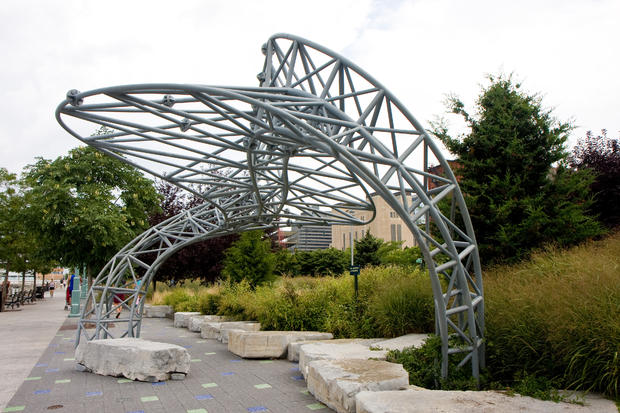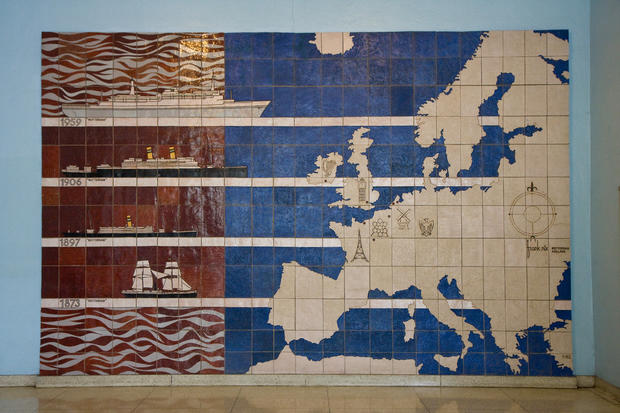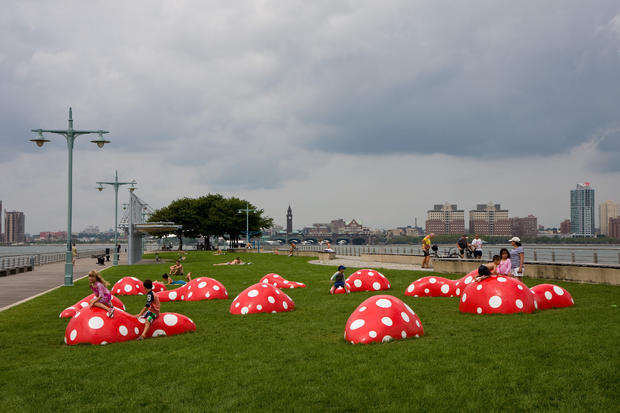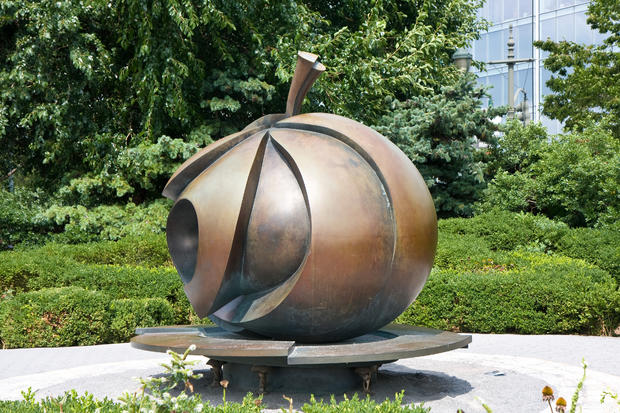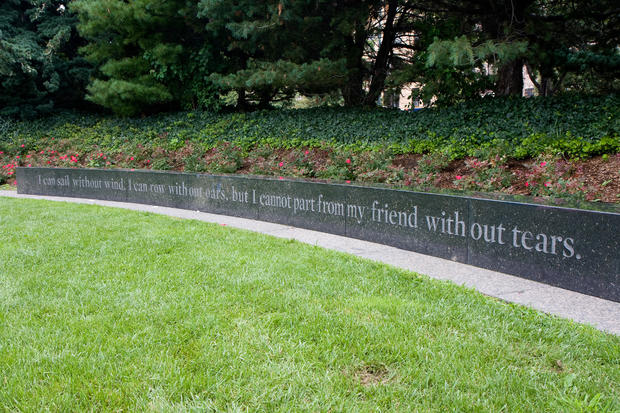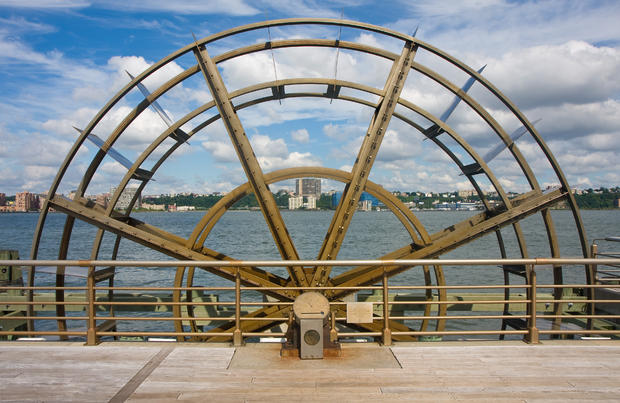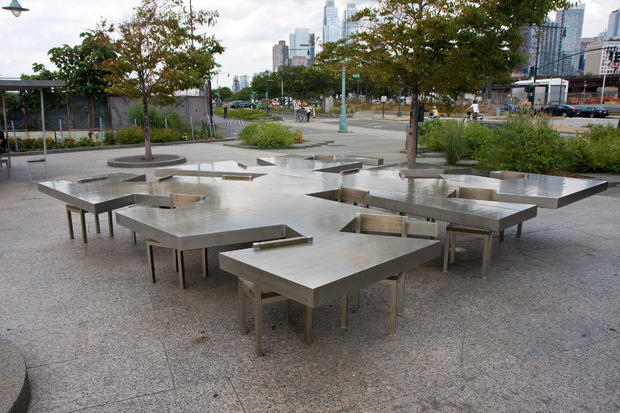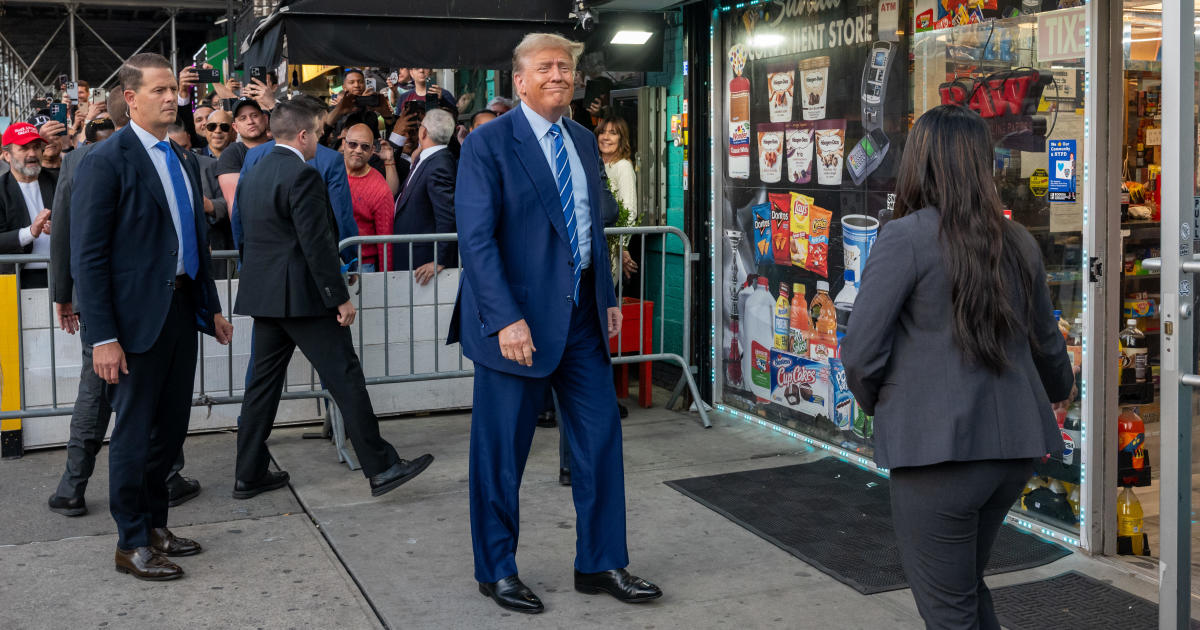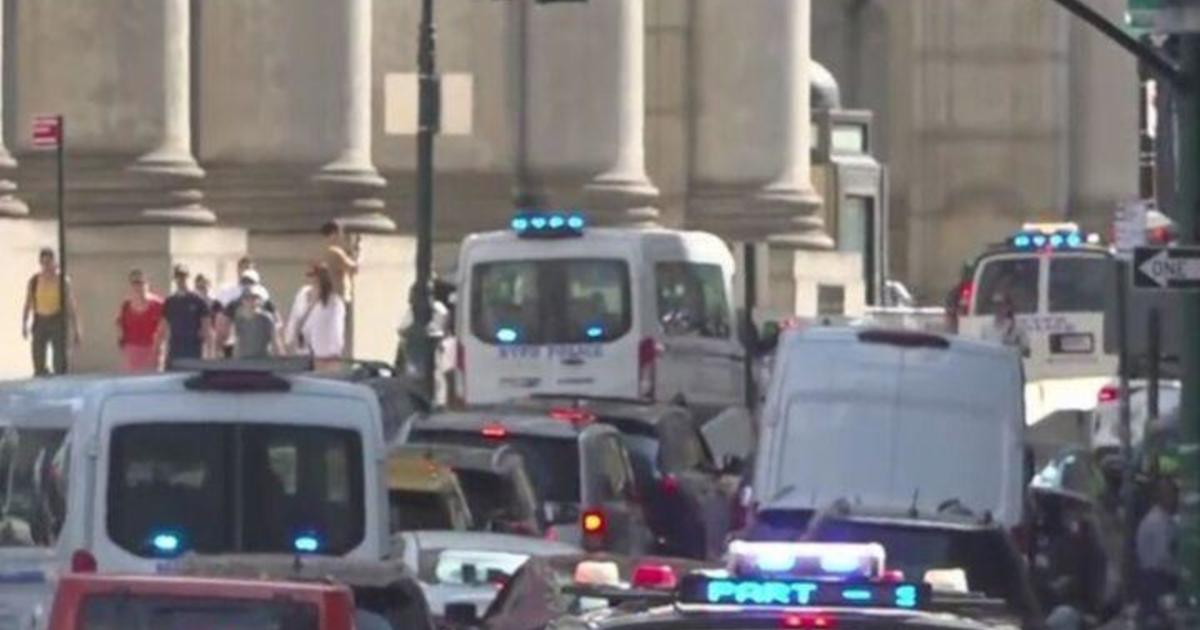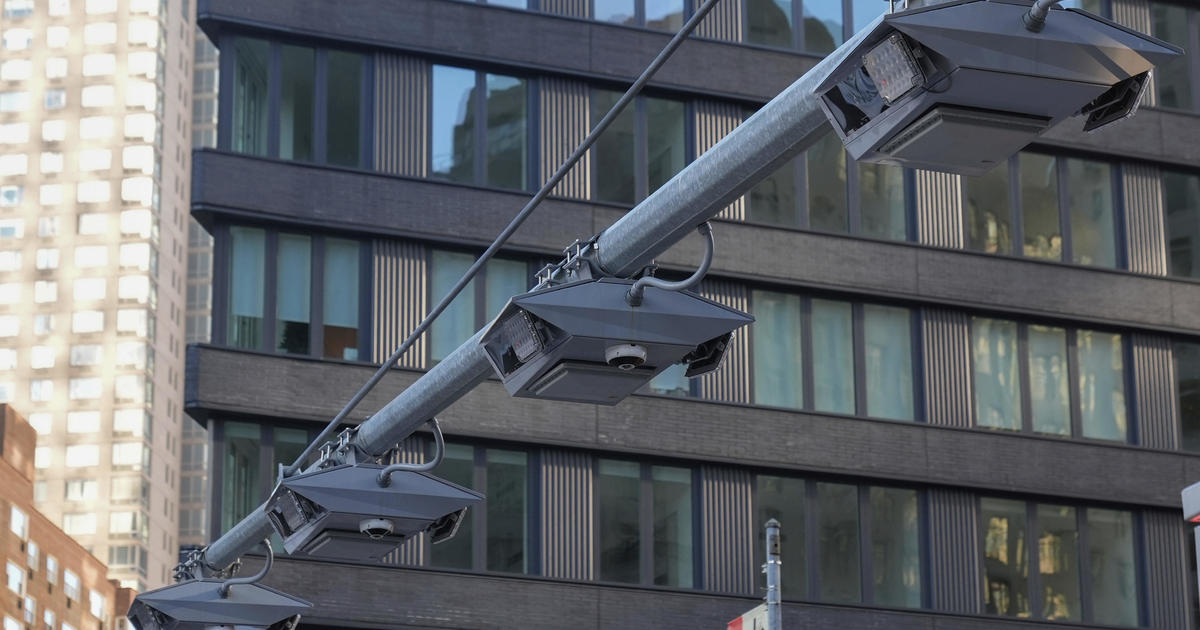Hudson River Park Art Walk: 8 Pieces Of Outdoor Artwork to See
In our book, putting art along a river is a little like adding whipped cream to cake. Some might cry "overkill," while others will be too busy lapping up the extra calories to care. Too much sweetness, or beauty, is never enough. The roughly two mile-stretch of Hudson River Park between Grand Street in Tribeca and West 29th in Chelsea offers tremendous views of the New Jersey shoreline, the Manhattan skyline and Lady Liberty herself, along with eight fascinating works of art. By Jessica Allen.
"Serpentine Structures"
At Watts Street
In person, "Twister," one of three cantilevered "Serpentine Structures" (2008) torqued and welded by Marc Gibian, looks less like the waves it purports to represent and more like a very shiny jungle gym. As such, the sculpture proves irresistible to kids and fitness freaks alike, who love to see how long they can hang from its steel bars. Nevertheless, some might also see an image of the warped beams of the fallen World Trade Center in Gibian's cantilevered shapes.
Holland-America Line Mural
Pier 40 at Houston Street
To reach this ceramic mural, you have to enter Pier 40, the largest on the river. Built in 1963, the pier was meant to be a glamorous entry and exit for those arriving or departing on the Holland-America Line. These days, the lobby resembles a hospital waiting room, with dusty floors and fluorescent lights. Frank Nix's mural depicts ports of call and different liners. With a little effort and half-closed lids, you might be able to conjure Don Draper and Roger Sterling hustling past on their way to get a drink somewhere.
"Guidepost to the New Space"
Pier 45 at Christopher Street
Of all the artists on this list, this one has the name that's most fun to say: Yayoi Kusama. In honor of an exhibition of her work at the Whitney Museum of Art, "Guidepost to the New Space" (2004) features polka dot bubble creatures rising up from the lawn. Are they whales? Mushrooms? Clouds? Hard to say. At any rate, not a single person obeys the sign, which admonishes one "not [to] climb sit, or play on the sculptures." See them before they go away on September 30 and the lawn goes back to being just that.
"The Apple"
Pier 46 at Charles Street
"The Apple" (2004), by Stephan Weiss, plays on New York's nickname, popularized by an early 1920s newspaper column about horse racing by John J. Fitz Gerald. This big apple weighs three tons and is nine feet tall, with a hole cut through the center. However, absence is presence, as you can look through the hole and see the mostly glass Richard Meier towers rising beyond or the trafficking going by or the people running past or the river, depending on where you're standing. The apple's true center is all of this and us and more.
"AIDS Memorial"
At West 11th Street
Dedicated to "those whose lives have been ever changed by AIDS," as a nearby plaque states, this 2-foot-high, 42-foot-long granite bench overlooks half-submerged pilings of a long-gone pier, remnants of activity and industry, a stark metaphor for the dead. The "AIDS Memorial" (2008) reads, "I can sail without wind, I can row without oars, but I cannot part from my friend without tears." This work exists in large part due to the efforts of Lawrence Swehla, a New York City schoolteacher who began fundraising for an outdoor public memorial in 1994.
"Stonefield"
Pier 64 at West 24th Street
Once upon a time, wolves and bobcats, mountain lion and beavers lived on my block, where entirely different creatures now roam. "Stonefield" (2010), by Meg Webster, conjures that prehistory. This artwork is a cluster of huge stones selected for their "individual 'being-ness'" from quarries in New York State and northeast Pennsylvania. If you're curious about what Manhattan looked like before it became Manhattan or what might have lived there, spend some time at The Welikia Project, an incredible, interactive attempt by the Wildlife Conservation Society to document New York City prior to Henry Hudson's arrival in 1609. "Welikia" means "my good home" in Lenape, the name of the people who first inhabited this area and the language they spoke.
"Long Time"
Pier 66 at West 26th Street
Like "Stonefield," Paul Ramirez Jonas's "Long Time" (2007) evokes the city's past. In this case, the stainless steel water wheel, spanning almost 30 feet, echoes the many vessels and seafaring crafts that used to crowd along the Hudson. But this sculpture also evokes the present and the future. A counter clock tracks the wheel's revolutions, measuring time as you stand watching. And the wheel has been designed to keep turning and turning and turning, long into the future, until it's stopped by something catastrophic, such as global warming or an explosion.
"Two Too Large Tables"
At West 29th Street
Allan and Ellen Wexler's "Two Too Large Tables" (2006) plays with our notions of space. In one of the two pieces, 13 chairs extend up and become columns, supporting a 16-square-foot plane seven feet off the ground. In the other, more chairs support an identically sized plane 30 inches off the ground. One provides shade, the other a place to eat, work, or just rest your elbows. Both require groups of friends to reconfigure or strangers to interact, as the chairs are totally immobile, locked into odd configurations. Yet, through this restriction, the artists encourage intimacy and community.
